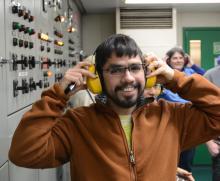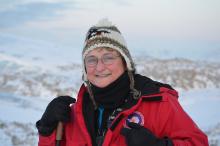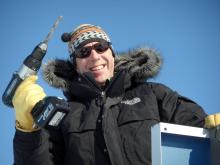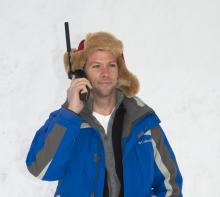Welcome to the Virtual Base Camp, the starting point for your exploration of the polar regions with PolarTREC teachers and researchers!
2011 Expedition Timeline
Expeditions
Seawater Property Changes in the Southern Ocean
What Are They Doing?
An interdisciplinary team of scientists, supported by the National Science Foundation (NSF) and the National Oceanic and Atmospheric Administration (NOAA), traveled from McMurdo Station, Antarctica to Punta Arenas, Chile aboard the U.S. research vessel Nathanial B. Palmer. While aboard, they collected data from the Bellingshausen, Amundsen, and Ross Seas and the Southern Pacific Ocean. Using many different types of oceanographic instruments they collected water samples at various depths to obtain data about the salinity, temperature, oxygen, CFCs, nutrients, ocean carbon, and other substances. Other scientists participating in the research cruise measured aerosols, solar radiation, and recovered and deployed moorings that were used to collect data during the remainder of the year.
Oceans play an important role in the global carbon cycle, as they absorb and store carbon dioxide (CO2) from our atmosphere. However, the amount and rate of carbon dioxide absorption depends on many things such as phytoplankton, temperature, salinity, water currents, and location. One of the main goals of this study was to observe the changing patterns of dissolved carbon dioxide (CO2) in the ocean. This helped give scientists the information they needed to improve their forecasting abilities for the oceans and global climate.
The US Global Ocean Carbon and Repeat Hydrography program began it's ship-based studies in 2003, and has since conducted similar work around the world with research cruises scheduled into 2014.
¿Qué están hacienda?
Un grupo interdisciplinario de científicos, apoyados por el NAtional Science Foundation (NSF) y la National Oceanic and Atmospheric Administration (NOAA), viajarán de la Estación McMurdo, Antártida hasta Punta Arenas, Chile abordo del buque de investigación Nathaniel B. Palmer. Desde el buque colectarán datos de os mares Bellinghausen, Amundsen y Ross y el Pacífico del Sur. Utilizarán diferentes instrumentos oceanográficos para colectar muestras de agua a diferentes profundidades para obtener información sobre la salinidad, temperatura, oxígeno disuelto, compuestos clorofluorocarbonados (CFC), nutrientes, carbono oceánico, y otras substancias. Otros científicos en la expedición medirán aerosoles, radiación solar, y recuperarán boyas oceanográficas que se han utilizado para colectar datos en meses pasados.
Los océanos juegan un papel muy importante en el ciclo global del carbono, al absorber y almacenar dióxido de carbono (CO2) de nuestra atmósfera. Sin embargo, la cantidad de carbono y la rapidez con la que es absorbido por los océanos depende de muchas cosas, como el fitopláncton, temperatura del agua, salinidad, corrientes oceánicas, y localidad. Uno de las metas más importantes de este estudio es el observar los cambios en los patrones del dióxido de carbono en el océano. Esta información permitirá a los científicos mejorar la capacidad de predicción de sus modelos climáticos y oceánicos .
El programa US Global Ocean Carbon and Repeat Hydrography (Carbono Oceánico Global e Hydrografía repetida de los EU) empezó sus investigaciones desde buques científicos en el 2003, y desde entonces ha conducido trabajos similares en diferentes cruceros por el mundo entero. Estos trabajos están programados para continuar hasta el 2014.
Expedition Map
Biology of Antarctic Fishes
What Are They Doing?
Antarctic icefish are uniquely adapted to life in the extreme conditions of the Southern Ocean. Waters surrounding Antarctica are unlike any other, they are isolated, very cold, have large amounts of dissolved oxygen, and have low numbers of competing animals.
Because of this unique environment, the icefish have evolved with some interesting traits. They do not have a swim bladder, and they spend much of their time near the ocean floor. To help them survive in the very cold waters, they have antifreeze proteins in their blood and body that keep their cells from freezing. Because of the high oxygen content in Antarctic waters, the icefish are able to survive with lower amounts of hemoglobin, the protein that carries oxygen to the rest of the body, than other fishes.
Scientists believe that the unique characteristics of icefish cell structure may be connected to how well they are able to withstand increases in ocean temperature. Because of this, Antarctic icefish may signal the impacts of climate change on the water temperature of the Southern Ocean.
The research team captured the icefish by trawling from the R/V Laurence M. Gould. After catching them, they placed the icefish in tanks at Palmer Station. By changing water conditions in the tanks, the team studied the fishes tolerance to changing conditions. They also took tissue samples from the fishes for future experiments at their home institutions.
Expedition Map
Carbon Balance in Warming and Drying Tundra
What Are They Doing?
The carbon cycle is the means by which carbon is moved between the world’s soils, oceans, atmosphere, and living organisms. Northern tundra ecosystems play a key role in the carbon cycle because the cold, moist, and frozen soils trap rotting organic material in the soils. This very slowly decaying organic material has caused carbon to build up in the arctic during the past thousands of years. Now warming in the arctic is slowly causing the tundra to become warmer and dryer. As a result, the trapped carbon leaves the soil as carbon dioxide and goes into the atmosphere.
The research team studied changes to the carbon cycle in northern forests by setting up experiments that copy the setting of warmer and dryer tundra. When they arrived at the field site they first removed snow from the research sites, constructed new warming chambers, installed water wells, and set up a carbon dioxide measuring system. After the set-up, the team began taking field measurements of carbon dioxide exchange between the soil and atmosphere, permafrost thaw depth, and water table depth. In addition, they took samples of plant and soil and studied the plant life cycles, also known as phenology.
The experiment is part of the Carbon in Permafrost Experimental Heating Research (CiPEHR) project. The results of their research will be helpful in predicting how the warming and drying tundra will affect the carbon balance, and how the release of additional carbon dioxide will affect global climate change.
Expedition Map
Nitrogen in the Arctic Ocean Ecosystem
What Are They Doing?
The research team sampled the coastal waters of the Arctic Ocean to investigate how microbial creatures affect the productivity of a coastal Arctic ecosystem. They traveled to the field site via snowmobile and sampled the seawater through a hole drilled into the sea ice. The seawater collected was used to look at competition between autotrophs, organisms that make their own food, and heterotrophs, organisms that cannot make their own food, and for nitrogen (N) in the waters near Barrow, Alaska.
The field work took place over the course of three seasons (two years) to give researchers the opportunity to investigate the coastal water ecosystems in different seasons, winter and summer, and with different amounts of daylight. The sources of nitrogen vary when there is no daylight in the winter, from the summer where there is nearly 24 hours of daylight.
In ocean ecosystems, microbes dominate many of the processes and are the major producers and consumers of carbon dioxide (CO2) and other greenhouse gases. Understanding the role of microbial communities in the Arctic ecosystem is an essential part of predicting the impact of climate change on Arctic food webs and other natural cycles.
Expedition Map
Glacial Movement and Seismicity
What Are They Doing?
Glaciers are like moving rivers of ice, and as meltwater makes its way to the bottom of the ice sheet it acts like a lubricant helping the glacier move. As climate warms in the polar regions, glacial meltwater increases, reduces friction, and causes this movement to increase. Increased glacial movement may cause glaciers to recede more rapidly, but there is no exact formula for this.
For this project, the team worked at the Svartisen Subglacial Laboratory, a laboratory located beneath a glacier, to study the glacier’s movement. From the lab, water pressure beneath the glacier was manually increased in an attempt to cause rapid glacial movement. The sliding of the glacier caused very small earthquakes, which could be measured using seismometers at the glacier surface and in rock tunnels below the glacier.
Predicting future increases in ice-sheet sliding speed is one of the single largest unknowns in predicting sea-level rise due to melting glaciers. The measurements taken were to help scientists learn more about glacial movement. In addition, the information improved how seismological data from the Greenland and Antarctic ice sheets translate to glacial movement, and therefore sea level rise.
Expedition Map
Solar Radiation on the Greenland Icesheet 2011
What Are They Doing?
Solar radiation is the major energy source that drives our climate and supports life on earth. In this project, the research team gained a better understanding of the solar radiation reflected back into space and absorbed by our planet, also known as the Earth’s heat balance. The team collected data related to this balance using weather observing instruments and a specially equipped aircraft that detected wind speed and directions and electromagnetic radiation.
The measurements were part of an international effort to record radiation called the Baseline Surface Radiation Network project. The data collected was used to further study the Greenland Ice Sheet and it’s processes such as melting and gas exchange with the atmosphere.
Studying heat balance is an important concept in climatology because light surfaces, like snow, reflect more radiation back into space while dark surfaces, like water, absorb more radiation. When you have snow cover, about 90% of the solar energy that goes through the atmosphere is reflected back into space. But increasing the amount of water on the Ice Sheet causes less radiation to reflect and more heat to be absorbed. This increases the temperature and causes more ice to melt.
Expedition Map
Microbial Activity in Thawing Arctic Permafrost
What Are They Doing?
Underlying the northern arctic coast of Alaska is a thick layer of permafrost. As water melts and pools on top of the permafrost, thaw lakes are formed. There are many thaw lakes on the North Slope of Alaska. As they decompose organic material, the bacteria and other microorganisms living in thaw lakes produce methane. Methane is a greenhouse gas, and increased microbial activity in thawing permafrost areas could lead to changes in the atmosphere due to the release of methane.
Microbial activity in thaw lakes is not very well understood. This research was important for better understanding how microbial activities affect the biogeochemical cycle, or the way specific chemicals move through living and non-living processes on Earth.
To collect their data, the research team combined research methods from biology, ecology, and biotechnology. They collected data in the field including soil cores, thaw depth, water table depth, and dissolved oxygen measurements. Additionally, they monitored bacterial respiration and conducted related lab experiments.
Expedition Map
Atmospheric Conditions and Arctic Climate
What Are They Doing?
Aerosols are small, solid, particles like dust, smoke, and smog which are suspended in the air. Aerosols are generated by a variety of natural and man-made sources such as fossil fuel combustion, forest fires, and dust storms. Because aerosols have the ability to diffuse light coming from the sun, they may actually have a cooling impact on our Earth’s climate and the Greenland Ice Sheet.
In order to study the effect of aerosols on the arctic and the Greenland Ice Sheet, the research team took snow and air samples to measure the amount of aerosols. By looking at snow surface properties and chemistry the research team explored connections between aerosols and the snow surface albedo, or reflectivity.
The Greenland Ice Sheet plays a key role in regulating global climate. It also stores a large volume of fresh water. If it melts, it has the potential to cause sea level to rise. It is important to understand how air pollutants impact the climate of the Arctic, because changes in the Greenland Ice Sheet could affect places and people around the world. Better understanding the effects of aerosols would allow us to predict or adapt to some of these changes.
Expedition Map
Forest Response to Arctic Environmental Change
What Are They Doing?
Growth rings, also known as trees rings or annual rings, are annual layers of tree growth that can be seen when looking at the cross section of a tree trunk. Looking at the rings, you can determine the age of the tree by counting the rings. By looking at rings, you can also study the response of the tree to environmental conditions like a really dry or wet year. The study of tree rings is called dendrochronology.
The research team studied mostly white spruce trees on the North Slope of Alaska. They collected samples from the boreal forest and further north around the tree line (the place too far north for trees to grow). They collected samples by coring trees, taking tree measurements, and recording observations about the environment around the trees.
Using this study, the research team looked at environmental conditions of the past and tried to determine which conditions have the greatest impacts on tree growth. The records were compared to similar data from around the entire arctic to better understand the response of boreal forests to changes in seasonality.
Expedition Map
High Arctic Change 2011
What Are They Doing?
The Svalbard Archipelago has an arctic climate and is home to several large bodies of ice called glaciers. There are alpine glaciers in the mountains, and also tidewater glaciers that end in long narrow bodies of seawater called fjords. For the past nearly 10,000 years, the glaciers of this region have been receding and most recently there has been a regional reduction in sea ice. The region is ideal for the study of past climate because the arctic is sensitive to changes in climate and several different types of measurements on and around glaciers can be conducted here.
The research team, which included undergraduate geoscience students participating in the Research Experiences for Undergraduates Program, traveled to Svalbard to investigate how climate change affects sediment transport and deposition associated with the tidewater glaciers, icebergs, meltwater streams, and marine currents. Tidewater glaciers are among the fastest changing systems in the Arctic, offering the team the opportunity to monitor rapidly changing and dynamic systems.
To conduct their research, they sampled ice from Svalbard glaciers and icebergs and studied the concentration of rocks and sediments. They also studied the sediments on the glacial fjord sea bed to look at where sediment from the glacier was being transported and deposited in the past. The oceanography of the fjord waters in front of the ice margins were also studied by the students. The team also utilized aerial photographs and GPS mapping to determine the position of the glacier and its rate of retreat. Using this data and more, the team helped determine what relationships exist between current sedimentation, glaciers, oceans, and weather data. Being better able to predict how glacial systems react to climate change helps scientists better understand their contribution to sea level rise.
Expedition Map
Early Human Settlement in Arctic Alaska 2011
What Are They Doing?
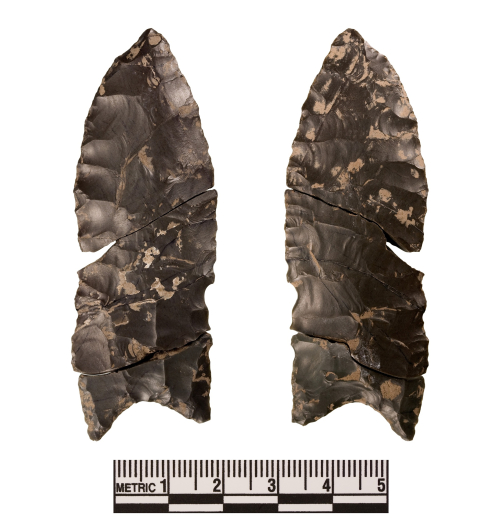
The site also contains fluted projectile points – a type of stone spear tip that is associated with many of the earliest archaeological sites in the continental United States. Fluted projectile points are found in Alaska and the Yukon Territory of Canada, but have never been reliably dated.
Because people migrated from north-to-south after entering the Americas from Asia across the Bering Land Bridge, fluted points in the far north are expected to be older than the fluted projectile points found in the continental United States. However, initial findings from Raven Bluff indicate that the fluted projectile points at this site are actually younger than the oldest fluted projectile points in the continental United States. By dating these artifacts, the research team studies the nature and timing of early human population movements in the Americas.
Expedition Map
Adaptations of Marine Worms in Antarctica
What Are They Doing?
The research team SCUBA dived below the sea ice to collect polychaete worms. Polychaetes are segmented worms generally less than 10 centimeters (3.9 inches) long, but can vary greatly. They are marine worms that live throughout the world’s oceans and can survive in very harsh conditions including the deepest depths of the ocean.
Once the worms were collected, the research team ran temperature and nutrition experiments on them in the laboratory. These experiments helped researchers understand how the worms are able to adapt to these very cold waters, and how they will survive as ocean temperatures increase.
Expedition Map
Human Impacts in Antarctica 2011
What Are They Doing?
Humans have occupied the McMurdo Sound for over a hundred years. Early visitors had little impact on the region, but starting in the late 1950’s year-round, permanent buildings were established at McMurdo Station. Over the years thousands of humans have visited this area and have changed the landscape. Under its obligations to the Antarctic Treaty, the United States maintains a long-term monitoring program designed to track the environmental conditions in and around the station.
Each year, the research team conducts environmental monitoring and chemical, physical, and biological sampling in and around McMurdo Station. They collect samples from both marine and terrestrial habitats as measures of human impact. They take the samples back to the lab to look for contaminants.
The results of this research help document and minimize the impacts of future science and support operations in Antarctica. This information can be used to inform management decisions in and around McMurdo Station to help preserve the unique Antarctic environment.
Learn more about this project by visiting the official project website.
Expedition Map
Space Weather Monitoring on the Antarctic Plateau
What Are They Doing?
Michelle and the research team supported a project that has been collecting important data since the early 1990's. The Polar Experiment Network for Geospace Upper atmosphere Investigations project (or PENGUIn for short) is gathering information in Antarctica to further understand the sun and space influences on the Earth’s upper atmosphere. This network is supported by the National Science Foundation Office of Polar Programs and is a collaborative effort to better understand the high latitude atmospheres of Earth and its response to conditions in space.
To do this, scientists created Automatic Geophysical Observatories (AGOs) that are active at five locations in Antarctica. These remote observatories house nearly identical instrumentation that measure atmospheric weather conditions at the poles. This includes the Earth’s magnetic forces, aurora activity, and the influence of phenomena in space weather. All of the AGO sites are on the Antarctic Plateau but record different conditions geographically. For instance, AGO site III records temperatures of 110°F below zero!
The research team visited one of the AGO sites by traveling on a four hour flight from South Pole Station in a highly maneuverable and versatile Twin Otter plane. Next, the team set up the camp, cook stoves, and started on their tasks. They had to be in good physical condition because much of the observatory was covered by snow and needed to be dug out. Often equipment is totally covered, so the team brought ground-penetrating radar to help find it. During their stay, the team made sure all of the different instrumentation was working properly and collecting reliable data. How is it that this data can be collected at such a remote location, you ask? The observatories are going green; running on solar panels and wind power! The team also made sure these energy sources were functioning properly.
The focus of the team’s expedition was to travel to the remote AGO site and providing support for the system. Supporting these observatories is crucial to the study of interactions between the magnetic fields of the sun and of the earth. Learning more can help us understand the potential disturbances in these fields that can disrupt radio communications or our power systems, and even take out satellites that orbit close to earth. With Michelle’s help, the team communicated the importance of understanding the links between our high latitude conditions here on Earth and weather conditions found in space.
Expedition Map
Antarctic Sub Glacial Lake and Stream Studies
What Are They Doing?
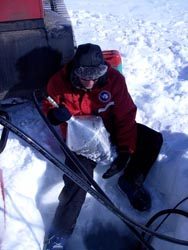
The WISSARD Project had three inter-related components:
- RAGES (Robotic Access to Grounding zones for Exploration and Science)
- LISSARD (Lake and Ice Stream Subglacial Access Research Drilling)
- GBASE (GeomicroBiology of Antarctic Subglacial Environments)
The primary goal of the first field season was to test and explore the zone (grounding zone) just before the grounded ice of the Whillans Ice Stream went afloat into the Ross Ice Shelf, which is thought to be a very sensitive area in terms of ice sheet dynamics and its response to global warming. During their deployment, the team used a hot water drill to melt boreholes deep into the ice stream. After the holes were melted, they tested and deployed complex new monitoring and sampling equipment under the ice.
Learn more about the project at the official project website.

